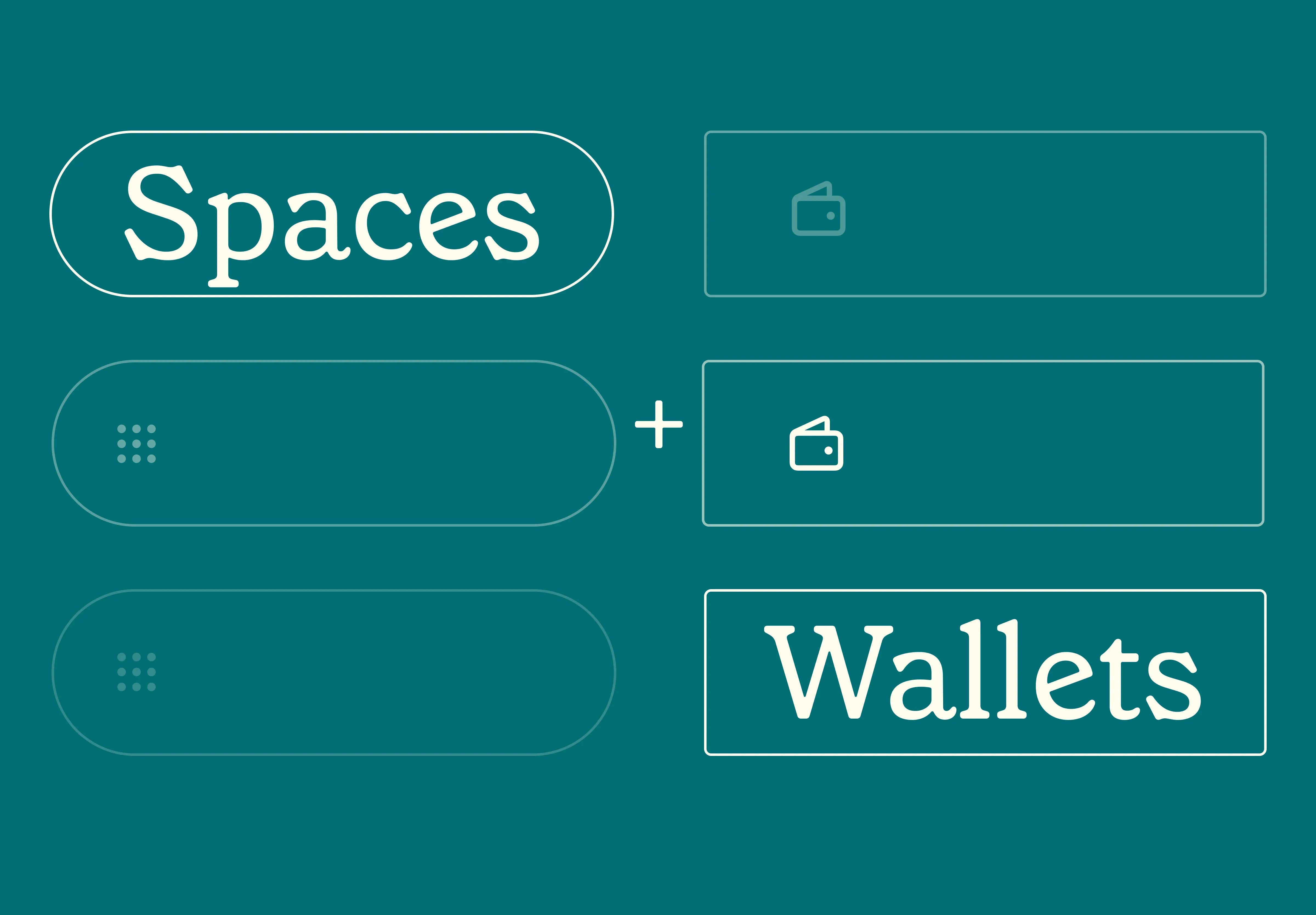14 Nov 2025
|7 min
Funnel testing
Maximize your conversion rates and improve the user experience with funnel testing.

Are you looking to increase your website's conversion rates and improve the overall user experience for your customers? If so, funnel testing may be the solution you're looking for.
You can use funnel testing to compare different versions of your website and see which is most effective at turning visitors into customers. By identifying aspects of your website that are working well and those that need improvement, funnel testing can help you improve your conversion rates and increase your revenue.
In this article, we'll explore the benefits of funnel testing and the different types and tools available for conducting these tests.
What is funnel testing?
Funnel testing, also known as conversion rate optimization, is the process of testing different versions of a website or landing page to see which is most effective at converting visitors into customers.
This is typically done by creating multiple versions of a page and then directing traffic to each version to see which one performs the best.
Funnel testing can help you improve your conversion rates by identifying which aspects of your website are working well and which ones need improvement. This can help you increase your revenue and improve the overall user experience for your customers.
What are the benefits of funnel testing?
There are several benefits to funnel testing, including:
Improved conversion rates: By testing different versions of a website or landing page, you can identify which is most effective at converting visitors into customers. This can help you increase your revenue and improve your overall performance.
Better user experience: Funnel testing can help you identify which aspects of your website are most effective at engaging and retaining customers. This can help you improve the user experience for your customers, which can lead to increased customer satisfaction and loyalty.
Enhanced marketing efforts: Funnel testing can provide valuable insights into the effectiveness of different marketing campaigns and strategies. This can help you make more informed decisions about how to allocate your marketing resources and achieve better results.
Increased efficiency: Funnel testing allows you to quickly and easily test different versions of a website or landing page, without having to change your existing website. This can help you save time and resources, and make more efficient use of your marketing budget.
Types of funnel testing
There are several different types of funnel testing, including A/B testing, multivariate testing, split URL testing, and navigation testing. Let's explore each in more detail.
A/B testing
Also known as split testing, A/B testing is a type of funnel testing that involves creating two different versions of a website or landing page and then directing traffic to each version to see which one performs the best. Many teams use landing page optimization tools to set up, track, and analyze these tests efficiently. These tools help compare how different versions of a page perform and determine which one is most effective at turning visitors into customers.
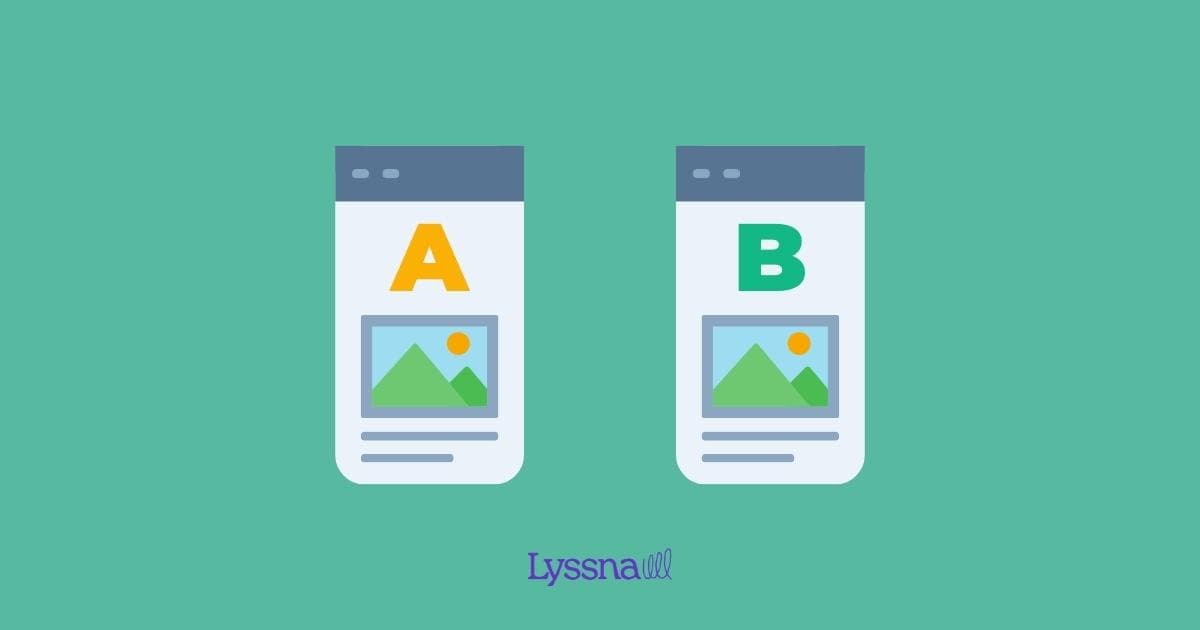
Multivariate testing
Multivariate testing is a more advanced form of funnel testing that involves testing multiple variations of a website or landing page simultaneously. This allows you to test multiple elements on a page, such as the headline, call-to-action, and images, to work out which combination is most effective.
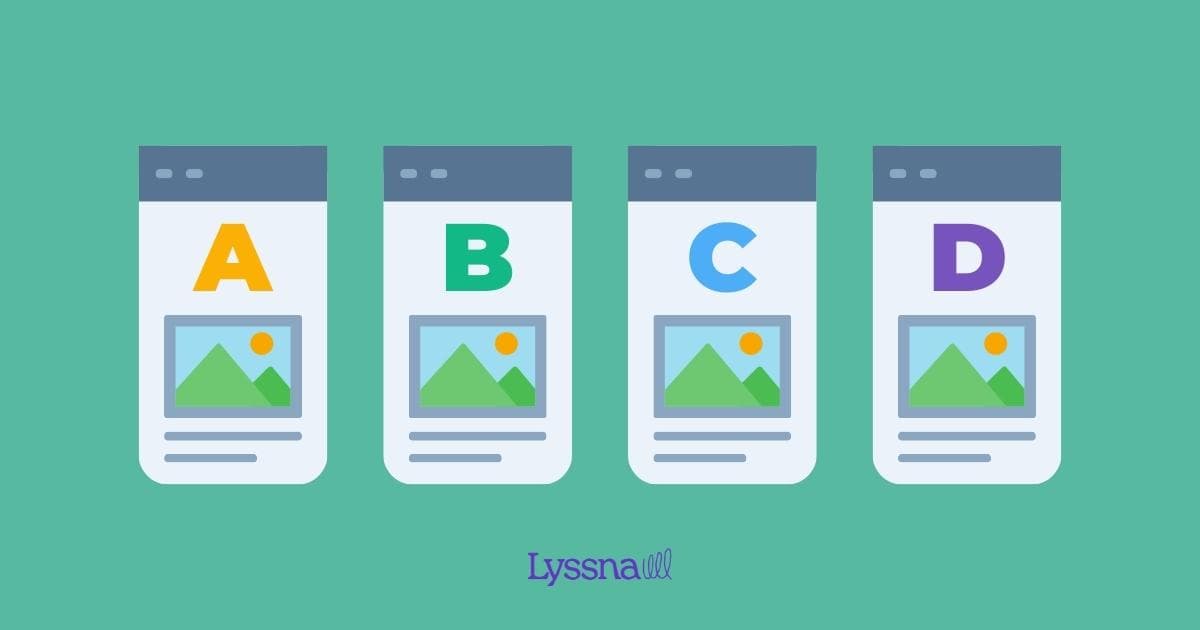
Split URL testing
Split URL testing is a type of funnel testing that involves creating two different versions of a page and then directing traffic to each version using different URLs. This allows you to test the effectiveness of those two versions without having to change the existing page.
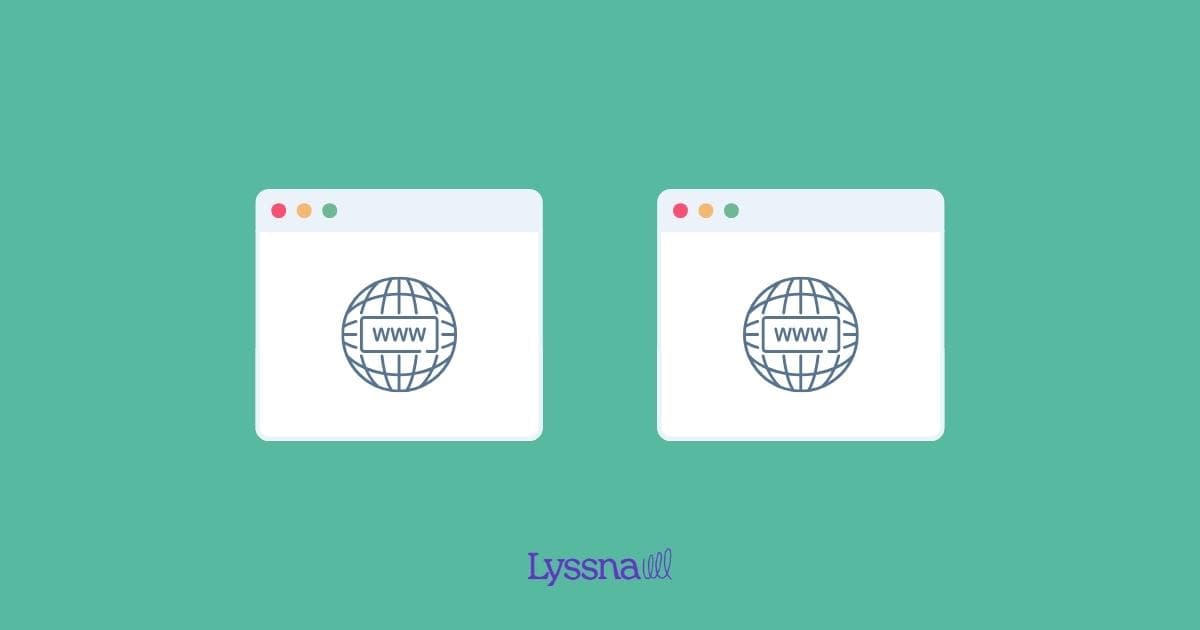
Navigation testing
Navigation testing is a type of usability testing that focuses on the effectiveness and efficiency of the navigation system in a website or software application. This type of test aims to evaluate how easy it is for users to find their way around the system and access the information or features they need.
Navigation testing is typically conducted by having users perform specific tasks or scenarios, such as completing a conversion action, and then evaluating how easily and quickly they could complete those tasks. This allows designers and developers to identify any problems with the navigation system and make improvements to enhance the user experience.
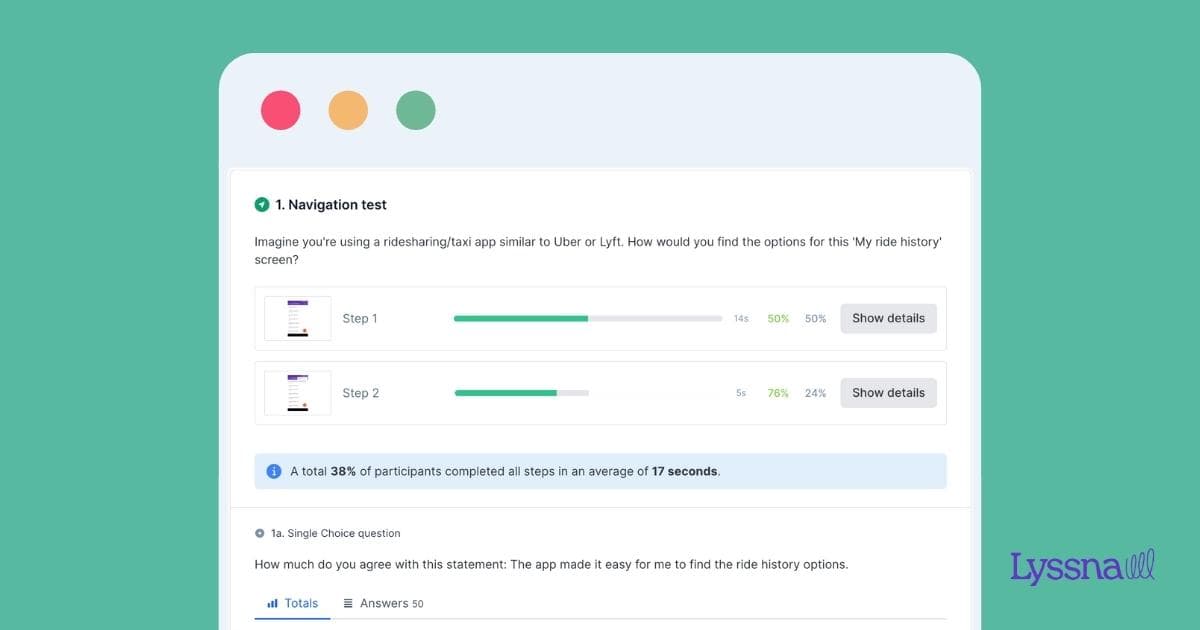
Top 5 tools for funnel testing
There are many tools available for conducting funnel testing, but some common ones include:
Google Analytics: This is a free platform that allows you to track and analyze the performance of your website, including the ability to set up and track conversion goals.
Optimizely: This is a popular platform for A/B testing and conversion rate optimization, allowing you to easily create and test multiple versions of a website or landing page.
Lyssna: This is a user experience tool that can be used for funnel testing. Lyssna is a platform that offers a range of user experience testing tools, including five-second tests, click tests, and navigation tests. These tools can help you understand how visitors interact with your website and identify potential issues that may impact conversion rates. By conducting regular usability tests and analyzing the results, you can make improvements to your website to optimize conversion rates and improve the user experience.
Crazy Egg: This tool provides heat map and scroll map reports that show where visitors are clicking and scrolling on a page, providing valuable insights into user behavior and helping you identify areas for improvement.
Hotjar: This is a user experience and analytics platform that offers a range of features, including heat map and scroll map reports, visitor recordings, and form analysis tools. These features can help you understand how visitors interact with your website and identify areas for improvement to optimize conversion rates.
By conducting regular funnel tests and making improvements based on the results, you can optimize the elements of your website or landing page that are most effective at converting visitors into new sign-ups, leads, or customers. This can lead to increased revenue and reduced acquisition costs.
Funnel testing can help you better understand your customers and the factors that influence purchasing decisions, which can inform future marketing and product development efforts. Overall, it's a valuable tool if you’re looking to improve your online performance and drive growth.
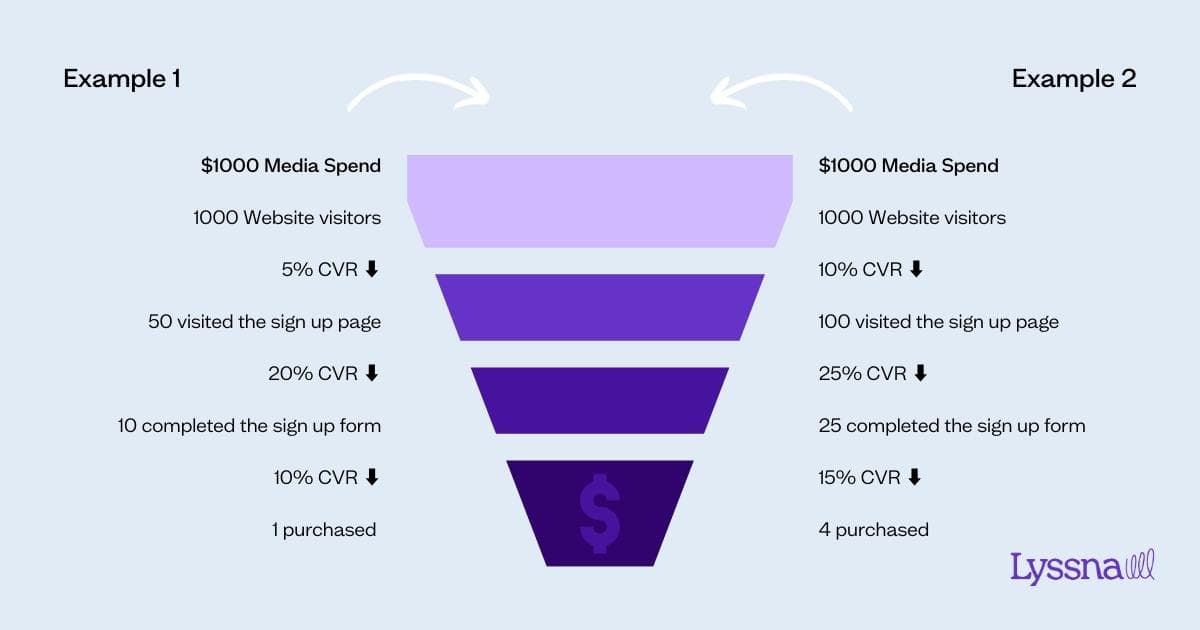
An example of the impact of conversion rate optimization.
Frequently asked questions about funnel testing
You may also like these articles


Try for free today
Join over 320,000+ marketers, designers, researchers, and product leaders who use Lyssna to make data-driven decisions.
No credit card required




